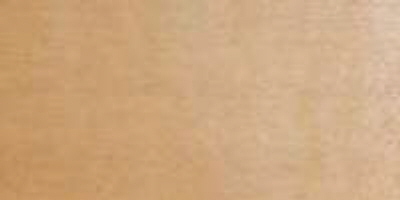|
BOTANICAL NAME: Tilia americana, Tilia cordata, Tilia heterophylla
consists of 30 to 35 species native to Eurasia and North America and all species
look alike microscopically
The word tilia is the classical Latin name, probably from the Greek ptilon,
wing, referring to the wing like set of flower clusters
COMMON NAMES: lime and lime tree in England and Europe, linn, linden, American
linden, American white wood, bass-tree, basswood, bee-tree, black limetree, gray
linden, lein, limetree, linden, linn, linn-tree, spoonwood, tilo, white linn,
whitewood, wickup, yellow basswood
The common name comes from its inner bark, or bast, used by Native Americans to
make rope
some breakout by subspecies:
Tilia americana = American basswood, American limetree, American linden,
American whitewood, Amerikaanse linde, Amerikanische linde, Amerikansk lind,
bass-tree, basswood, bee-tree, black limetree, gray linden, lein, limetree,
linden, linn, linn-tree, spoonwood, svart-lind, tiglio americano, tiglo
americano, tilleul americain, tilleul noir, tilo americano, white linn,
whitewood, wickup, yellow basswood.
Tilia caroliniana = Amerikaanse linde, Amerikansk lind, basswood, Carolina
basswood, Carolina linde, Carolina linden, downy basswood, Florida basswood,
Florida linden, linden, southern basswood, tiglio Americano, tilleul Americain,
tilleul de Caroline, tilo Americano, tilo de Carolina.
Tilia heterophylla = American lime, Amerikaanse linde, Amerikansk lind,
basswood, bee-tree, beetree linden, Tiglio Americano, Tilleul Americain, Tilo
Americano, Tuleul Americain, white basswood.
TYPE: hardwood
COLOR: heartwood is a pale light brown sometimes with darker streaks and
sometimes with a faint reddish tint, sapwood is creamy white
GRAIN: straight, fine and even to the point of being unnoticable, although it is
not 100% uniform and even good pieces may contain an occasional small knothole
or brown streak. Side rays can be very attractive and much like those of hard
maple (sometimes identical) but end-grain is almost nonexistant.
TEXTURE: medium, very even
PROPERTIES / WORKABILITY: light, moderately soft, weak to medium in strength.
Machines well and the lack of a stong grain pattern means that it takes nails
and screws very well with little danger of splitting, but the softness means it
does not hold nails and screws well. Its Uniform density leads to low tendancy
to chip or split when using power tools, but there is some tendancy tendancy to
rip or crush under the pressure of a cutting tool and sawing produces a woolly
surface. It glues very well and can be sanded to a good smooth finish. It works
very easily with hand tools and is a premier carving wood.
DURABILITY: poor mechanical durability and poor resistance to decay
FINISH: does not take a high natural polish and finishing usually requires a
sealer. This is one of the few woods where even I recommend paint, which it
takes very well. One report says that it contains no resin so takes stain very
uniformly and well but most reports emphasize blotchy effects in staining due to
porosity and softness.
STABILITY: It has fairly high shrinkage initially but is exceptionally stable in
service once dry and in fact that characteristic leads to its preiminance in the
realm of scientific instruments that require lack of movement (high end
engineering rulers are an excellent example).
BENDING: poor for steam bending
ODOR: no odor or taste
SOURCES: Europe, Canada and United States
The natural range of American basswood is from southwestern New Brunswick to
central Quebec, Ontario and southeast Manitoba, south to eastern North Dakota
and northeastern Oklahoma to northern Arkansas and Tennessee, east to North
Carolina, and north to Pennsylvania and New Jersey.
USES: Its smoothness, uniform texture, and lack of resin make it a favored wood
for turning and carving and because of its exceptionaly stability, it is the
most popular wood for high end rulers and wooden scientific instruments that
require little change in size and shape. Its relative softness make it ideal for
carving with a knife and it is very popular for model building. Also used for
picture frames, woodenware, toys, food containers, cabinet drawer interiors,
framestock, boxes, crates, cooperage, furniture, millwork, drawing boards,
novelties, pattern making, dowels, handles, venetian blinds, core stock,
plywood, pulp, decoys, fiber products, furniture stock, caskets, mobile homes,
shade rollers, signs, sporting goods, wooden ware, and novelties. An important
specialized use is Venetian blinds and shutters because of the uniform texture
and light weight. One report says it is used for musical instruments but that
seems unlikely to me. It is used for high-end industrial model building in the
car and ship industries.
TREE: can reach a height of 120 ft., with a diameter of almost 5 ft. and may
grow to be more than 140 years old. The trees have straight trunks, with most of
the bole limb-free, and narrow, short crowns. The trees grow as a cluster of
stems, developed from stump sprouts. The bark is initially dark green and shiny,
developing to a grayish color with deep furrows.
WEIGHT: very light, about 30 pounds per cubic foot
DRYING: dries fairly rapidly with little distortion or degrade
AVAILABILITY: common
COST: about $5 per board foot as lumber, but frequently sold as craftwood in
small sizes that pro-rate out to much a higher BF cost.
|




